“When it comes to growing cannabis, there are some aspects which are still to be fully understood,” says Paul Selina with Pure SunFarms, during his talk at the ACT Summit in Las Vegas. Paul has been operating greenhouses for more than 25 years, and now, he is working with the almost 2.2 million sqft of cannabis greenhouse of Pure SunFarms. In addition to learning more about the cannabis crop day by day, they also optimize the cost efficiency of their production thanks to their growing knowledge on the cannabis crop.
It’s a very impressive greenhouse in which Pure Sunfarms grows cannabis. The Village Farms / Emerald Health Therapeutics joint venture will soon have 2.2 million square feet of former vegetable acreage retrofitted for the cannabis crop. Annually they’re expecting to harvest 150.000 kg cannabis, an amount that can be more than doubled when they add the 2.6 million sqft of the next door Village Farms greenhouse they currently have an option on. In the last couple of years the team at Pure Sunfarms has learned a lot on growing cannabis – although it’s still an adventurous route. “At first we mainly focused on making it work. Now it does and now we learn more and more on the plant, we can continue to look forward.” Just like last year, on the ACT Summit in Las Vegas, Paul shared the gained knowledge on cannabis growing.
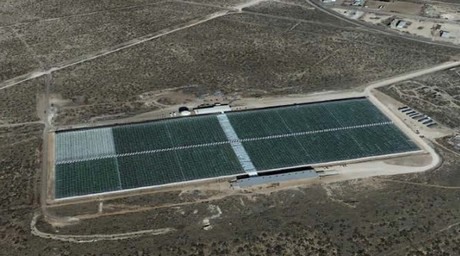 Hemp greenhouse based in Permian Basin, Texas
Hemp greenhouse based in Permian Basin, Texas
Plant makes climate decisions
“As we are going into this year, we start looking at the plant, and use the plant to drive climate decisions,” he points out. The team uses Plant Empowerment to do so, a concept and book developed in the Netherlands by Peter Geelen, Jan Voogt, and Peter Van Weel, which entails to take into consideration different plant balances. “Assimilates, temperature of the plant, and water uptake. All three of these interact with each other. Thus, it is important to measure them and understand how they influence the growth of the cannabis plant and base cultivation decisions on this information. In other words, let the plant itself to drive the strategic decisions within the greenhouse.”
“At the same time we are focusing on the energy use, trying to reduce the inefficient use of energy. At the same time, since we have focused a lot on humidity control, it has encouraged us to look at higher temperatures and less ventilation, maintaining a high level of CO2 with the same introduction level, for instance”, he continues, explaining how this concept originates from the vegetable industry. “Energy costs are a big concern there and even though we can afford a bit more in cannabis, we believe in efficiency.”
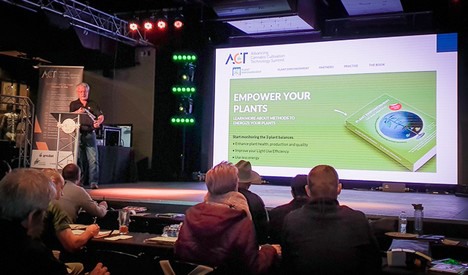
Cost vs production is a topic that’s taken into account in more decisions in the Pure Sunfarms company, that has made it clear more often that they believe efficiency and realizing the most efficient cost price to be key in order to create a sustainable enterprise. With this efficiency at heart they want to reach what they call the lowest ‘all in’ cost of production reported up to date by a Canadian LP: 0.65 CAD/gm2.
Therefor also the company does not add light to reach 700 mmol, what currently is believed to be the optimum light rate for greenhouse crops. “We have a light installation of 400 mMol/m2 and with our location in Vancouver, in winter time we do not reach 700 mmol every day. The plants might perform better with higher lighting, but we’ve seen that growing with 400 mmol/m2 offers very reasonable results in the winter months and that we can maintain similar year-round production.”
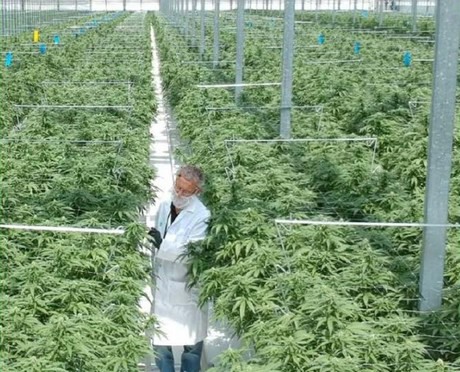
Humidity
One of the most important topics to control the energy costs, are the costs for dehumidification. “For instance, we realized that we couldn’t keep 40% of humidity, which is a common set-point for indoor growing,” he says. “Mechanical dehumidification with an additional HVAC system would have been incredibly expensive for a 1 million sqft greenhouse. Therefore, we set a much higher target, 60 to even 75% humidity. Now we work with air exchange, and separate air heating circuits. In this way, we can heat above the screen of the greenhouse, heat up the canopy, and heat the typical pipe rails underneath the crop, and we can warm up the air coming into the greenhouse.”
Energy within the plant
When talking about energy, Paul also talks about the balance between radiation and convection. “The plant is heated by radiation and convection. But, as it transpires, it loses heat. There’s a lot of radiation going from the plant to the environment, especially when there is no light. The management of this balance is key, because if you don’t get it right, it can be the cause of many problems later on.”
They have indeed noticed that if the plant got too much radiation to the outside, the head of the plant gets cold, causing condensation. On the other hand, if the plant gets too hot, then it gets stressed. Therefore, in order to measure this, they have been placing sensors in different places within the greenhouse.
“We have 5 sensor boxes in a standard climate zone, which are of 60,000 sqft each,” he explains. “And in order to come up with a strategy we have as many as 14 sensors in some zones. We put groups of three of them: one at the top, above the canopy that is, one at the head of the plant, and one at the base of the plant. This has been very useful to understand what was happening to climate in different levels. Then we also used a plant temperature meter, which gives the whole canopy average temperature. We analyze the different conditions and compare them with the air temperature, so not to get to close to the dew point.”
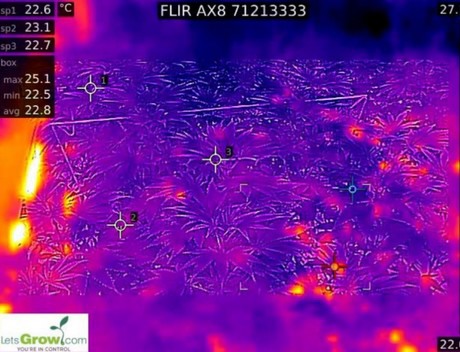
“Recently, we have also installed a net radiation meter, which is giving us a lot of insights. This is a light meter – a radiation meter – one sensor points towards the lamp, and the other towards the crop. Thanks to this, we have found out that the cannabis plant irradiates a lot of heat to the outside. To overcome that, we use the screens much more. In this way, we got further control on the air that we are bringing into the greenhouse.” Paul continues to explain that tomato growers do not use the screens this much, as this crop needs to stay cooler. “For cannabis,” he remarks, “it is better to keep the head of the plant warm.”
Photosynthesis
Additionally, Paul has explored the importance of maximizing the photosynthesis to allow the cannabis plant to grow stronger and healthier. “In tomatoes by know we know a lot on how to steer the crop: how to steer the energy in such a way that the plant grows vegetative or generative, using the energy for plant growth or fruit production. In cannabis we’re not there yet: we do not know exactly how the energy within the plant acts. But in general, if you want to maximize growth, you need to maximize the photosynthesis and you also need something to measure that. Thing is, such a tool is not available, yet.”
“Generally speaking, to maximize photosynthesis, you want to keep the stomata open. One of the strategies may be to allow warmer temperatures and higher humidity. We know that humidity allows the stomata to be more open, as there is more CO2 available which should increase the photosynthesis. We have seen that if you reduce the amount of ventilation, and keep the same quantity of CO2 supply, it can greatly benefit the potential of photosynthesis.”
Water balance
With regards to the water balance, Paul points out that there are three different elements to take into consideration: uptake, transpiration, and growth. “To measure all of this, we measure the weight of the plant and growing medium, and the volume of irrigation and drainage. We also use an irrigation graph, which has helped us to see how the air moving in the greenhouse impacts the plant transpiration. Precise measurement of stem diameter could be another tool to understand water status”
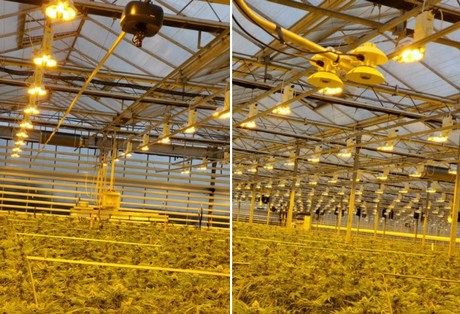
Growth measurement
It might be clear: there’s many aspects from his vegetable career Paul uses in optimizing efficiency in the cannabis crop. The same goes for the concept of growth measurement. “With tomatoes, this is fairly easy, as they are a vine which you can hang, and you can literally measure the weight gain of the plant. Because cannabis is not hanging, we have to look for other ways to measure how it is growing. We make use of advanced camera systems and vision recognition software, for instance.”
“When growing tomatoes, you have the same crop all across the cultivation. With cannabis, the situation is a bit different, as you have different rooms with different varieties, each of which going through different phases, with different environmental conditions. All those rooms go through different changes. It is of the utmost importance to simplify things, to come down to a standard recipe that can be adjusted for each room. Of course, this standard recipe cannot happen in every room, but it will surely make life easier for growers.”
The importance of data for advancing cultivation
“As we get more greenhouses growing cannabis, we can gather more information. We will then start analyzing the data in much more detail and thus coming up with a model that will help us better understanding what is necessary to grow cannabis at its full genetic potential.”
For more information:
Pure Sunfarms
puresunfarms.com
